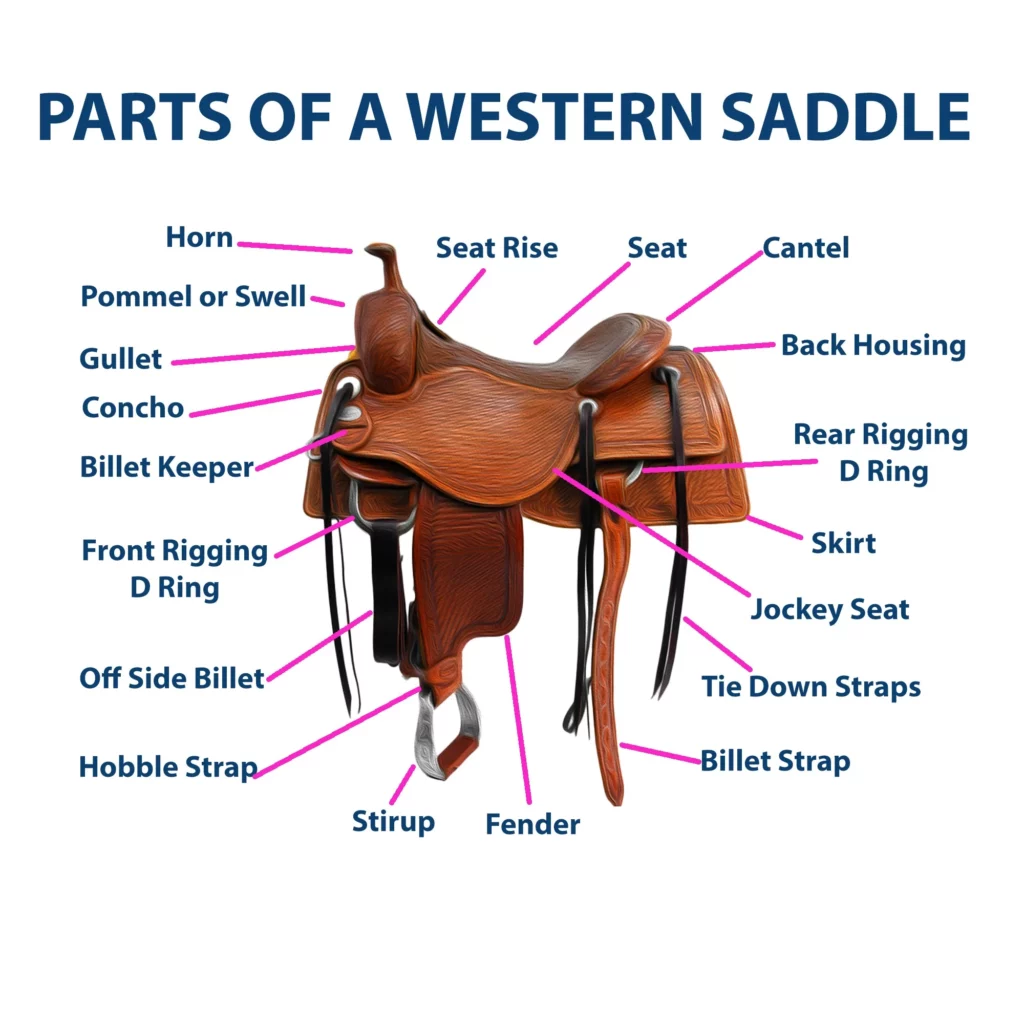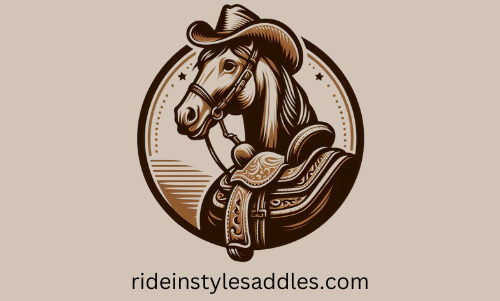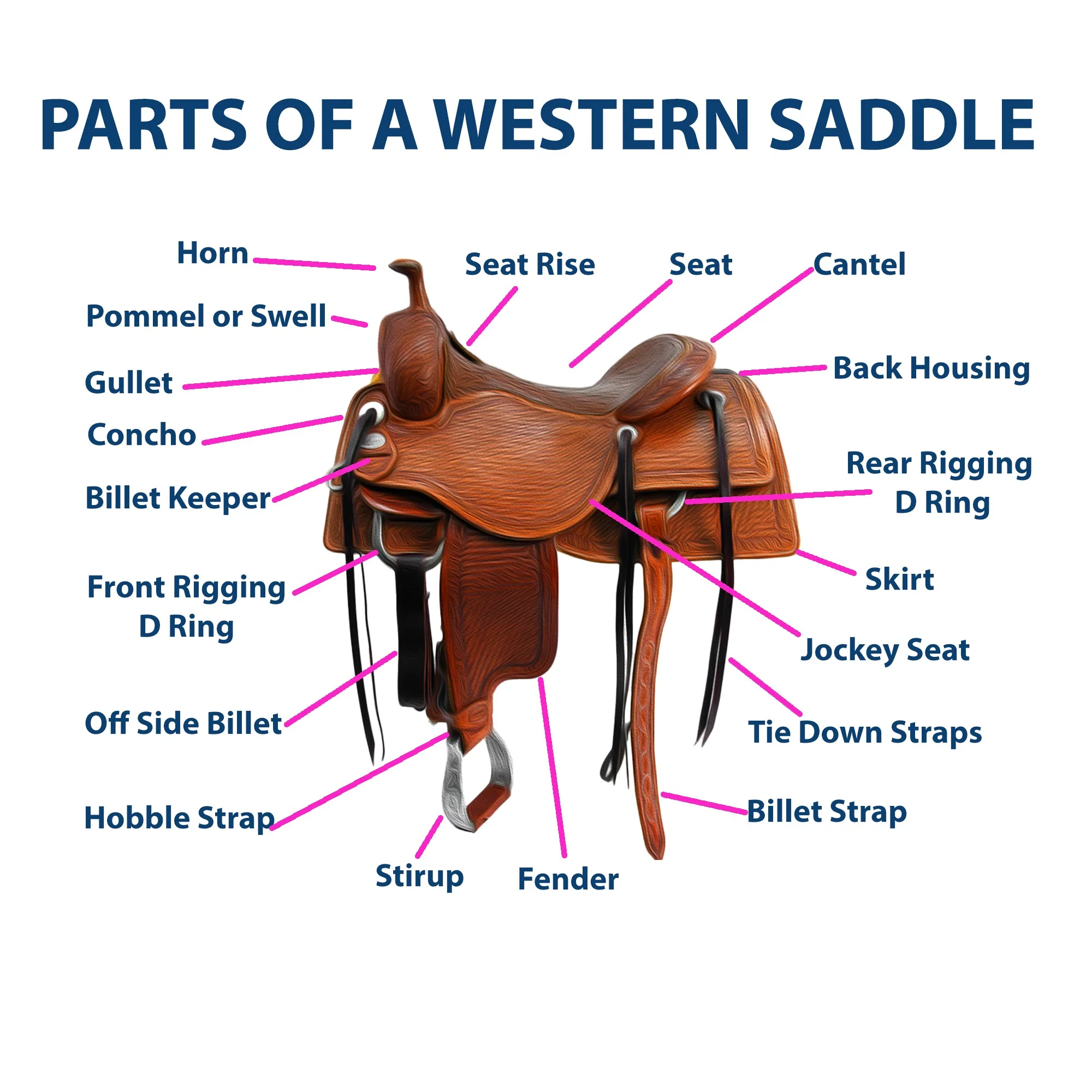
Parts of a Western Saddle: Everything You Need to Know
Have you ever wondered what makes a Western saddle so unique and functional? Whether you’re new to riding or looking to deepen your knowledge, understanding the different components of a Western saddle is essential for comfort, performance, and horse welfare. In this guide, we’ll take a closer look at each part and its purpose to help you make informed choices for your riding needs.
The Western saddle is an iconic piece of equestrian equipment, deeply rooted in cowboy culture and designed for both comfort and durability. Whether you’re a seasoned rider or a beginner, understanding the different parts of a Western saddle and their functions is crucial for choosing the right fit and ensuring a comfortable ride for both horse and rider.
In this guide, we’ll break down the essential components of a Western saddle, explaining their roles and how they contribute to overall performance.
Western Saddle Anatomy: Key Parts and Their Functions
A Western saddle consists of several key parts, each playing a specific role in stability, support, and rider security. Below are the main components:
1. Saddle Tree
The saddle tree is the foundation of a Western saddle, providing structure and weight distribution. It is typically made from wood or synthetic materials and covered in rawhide for durability. The tree is designed to fit the horse’s back properly, preventing pressure points and ensuring comfort.
The tree consists of two main sections:
- Fork – The front part of the tree that fits over the horse’s withers.
- Cantle – The back part of the tree that provides rider support.
2. Gullet
The gullet is the space beneath the saddle that allows clearance for the horse’s withers. Its width is crucial, as an ill-fitting gullet can cause discomfort or injury to the horse. When selecting a Western saddle, ensure the gullet width matches your horse’s conformation.
3. Cantle
The cantle is the raised back portion of the saddle that offers support and security for the rider. Higher cantles provide more back support, making them ideal for rough terrain or long rides, while lower cantles allow greater freedom of movement.
4. Skirt
The skirt is the large leather panel that extends beneath the seat. It distributes pressure evenly across the horse’s back and helps stabilize the saddle. Many Western saddles feature decorative tooling on the skirt for added aesthetic appeal.
5. Fenders
Fenders are the wide leather straps that connect the stirrups to the saddle tree. They protect the rider’s legs from sweat and friction while providing flexibility for adjusting the stirrup length.
6. Stirrups
Stirrups provide foot support and help the rider maintain balance. They are typically made of wood, metal, or composite materials. Properly adjusted stirrups enhance rider comfort and stability during long rides or rigorous activities.
7. Horn
One of the most recognizable features of a Western saddle, the horn sits at the front and serves multiple purposes. It provides a secure grip for riders and is also used for roping cattle in ranch work. The horn’s size and shape can vary depending on the saddle’s intended use.
8. Rigging
The rigging system secures the saddle to the horse using cinches (girths). There are two main types:
- Single-rigging – Uses one cinch for a more minimal setup.
- Double-rigging – Features a front and rear cinch for extra stability, commonly used in roping or endurance riding.
Choosing the Right Western Saddle
Selecting the right Western saddle depends on factors such as riding discipline, horse conformation, and rider preference. Different saddle styles are designed for specific activities, and choosing the correct type can significantly impact comfort and performance.
- Barrel Racing Saddles – Lightweight with a deep seat and high cantle for better grip during sharp turns.
- Roping Saddles – Built with a strong tree and sturdy horn to handle the force of roping cattle.
- Trail Saddles – Designed for long rides with added comfort features like padded seats and flexible skirts.
- Cutting Saddles – Allow greater freedom of movement to help riders stay balanced while maneuvering cattle.
Understanding the purpose of each saddle type will help you select the best fit for both you and your horse, ensuring an enjoyable riding experience.
Selecting the right saddle depends on factors such as riding discipline, horse conformation, and rider preference. Whether you need a barrel racing saddle, a roping saddle, or a trail-riding saddle, understanding these components will help you make an informed decision.
By knowing the essential parts of a Western saddle and their functions, you can ensure both you and your horse enjoy a comfortable and efficient riding experience. Have you tried different Western saddles?
Share your experiences, questions, or tips in the comments below—we’d love to hear from you!
Affiliate Disclosure – And last but not least, when you click on links and make a purchase through our site, you’re helping support our work at no extra cost to you! This allows us to keep bringing you the best products and helpful insights. It’s a win-win—improving your equestrian game while supporting our blog. Thanks for being part of the RideInStyleSaddles community!

